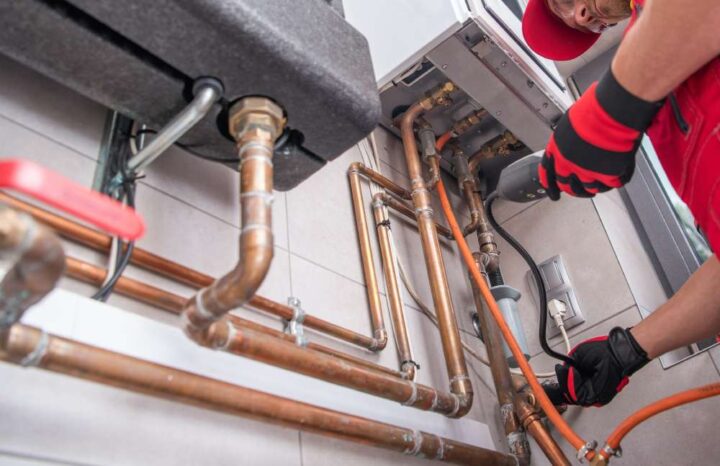Avoiding Heating Repair in Winter
One of the worst feelings a homeowner can have in deep winter is realizing the home heater no longer works. A home without heat can lose internal temperature quickly, even becoming colder than outside during a sunny day in December.
That’s because the cold permeates in and then acts like a refrigerator, compounding the problem. Internal heat not only reduces humidity levels, it maintains a comfortable level of temperature that protects the home from dampness. So, heating repairs in winter should be avoided where possible. One of the best ways to do that involves heating repair service maintenance on a regular basis.

Maintenance Applies to Anything Mechanical
Just like a car, a home heating system needs at least an annual checkup and maintenance service once a year. For the most part, these annual services are preventative in nature, finding small concerns and addressing them or checking the system to make sure everything is working correctly.
Aside from fireplaces and Christmas electrical problems, home heaters or furnaces are a top cause of home fires nationwide, especially when they age. So, an annual checkup is a good idea, not just for confirming the system is working, but also for safety as well.
Heaters involve a variety of parts that work together for moving warm air around a home. Especially with natural gas, a heating system has an ongoing feed of supply and an ignition point. When everything is working correctly, a heater will turn on and do its job as needed based on a thermostat trigger.
That involves heating air via the furnace and then blowing it throughout the duct system. Problems can happen when the furnace or heating exchange starts to malfunction. Heating efficiency can also be lost when the duct system has a leak or is plugged. Both can be spotted very quickly in an annual inspection and serviced by a technician if needed.
Carbon Monoxide Checks
Heating systems do, unfortunately, produce a by-product when operating in the form of carbon monoxide. This gas has no smell, no appearance, but it is extremely dangerous. Within minutes it can affect a person by replacing the oxygen breathed with CO molecules instead, causing a victim to pass out and even mortality. An annual heating repair services check ensures CO monitoring is performed and applied for any possible CO leak that may be developing.
In an Emergency, Shut Off the Gas and Ignition
If you find yourself in an emergency with a heater ignition, call 911 immediate for a fire department response. Typically, this rarely occurs. Most modern heating systems have safety shut-offs that, if something goes wrong, the system will turn itself off, cut heating operations and refuse to start again until internal safety checks are cleared again.
This is particularly helpful with older systems where, for example, the blower may collapse and fail even if the furnace itself is still working fine.
Plan for alternative heating with space heaters and a fireplace until a team is available to provide repairs. Note, space heaters need plenty of room around them to avoid catching nearby material or furniture on fire.
Oil radiator-style heaters are probably the best to use as they don’t have an open hot metal element exposed, but they too can get very warm. If using a fireplace, make sure it’s always attended or put out before leaving.
Filter Checks Count Too
Even something as simple as replacing the system filter makes a big difference. Air filters trap contaminants that otherwise circulate within a home. Worse, going through the furnace, they can be heated and burnt and then distributed again without filtering. A frequent filter change is an easy monthly task, but a maintenance check will add this task to the to-do list if needed.
Heating repair will respond as it can in winter, but annual maintenance checks reduce this risk considerably. And they can also save money and frustration in deep, dark winter. So, just like your car and doctor’s visit, have your heating system maintained at least once a year for your safety and benefit.


